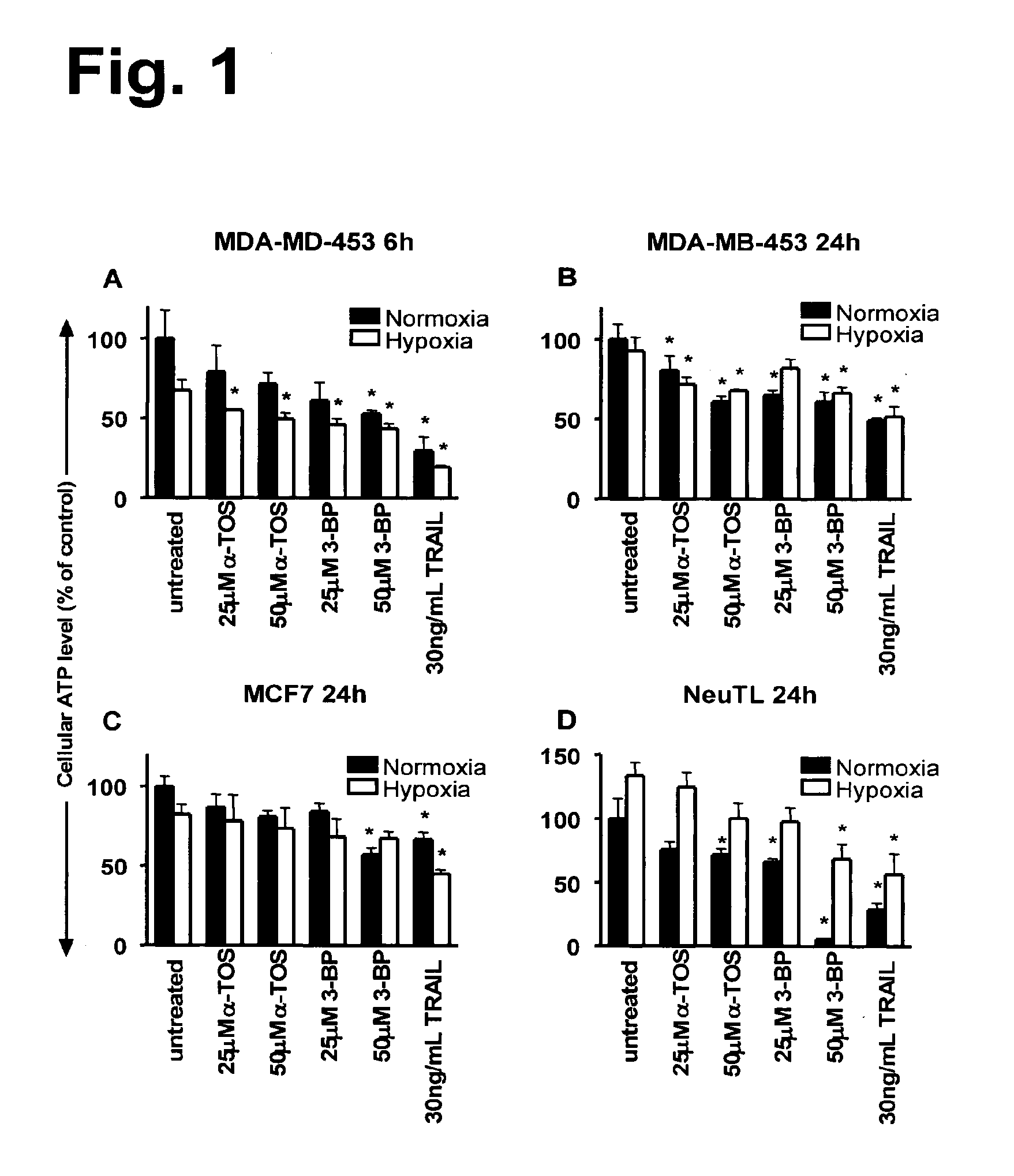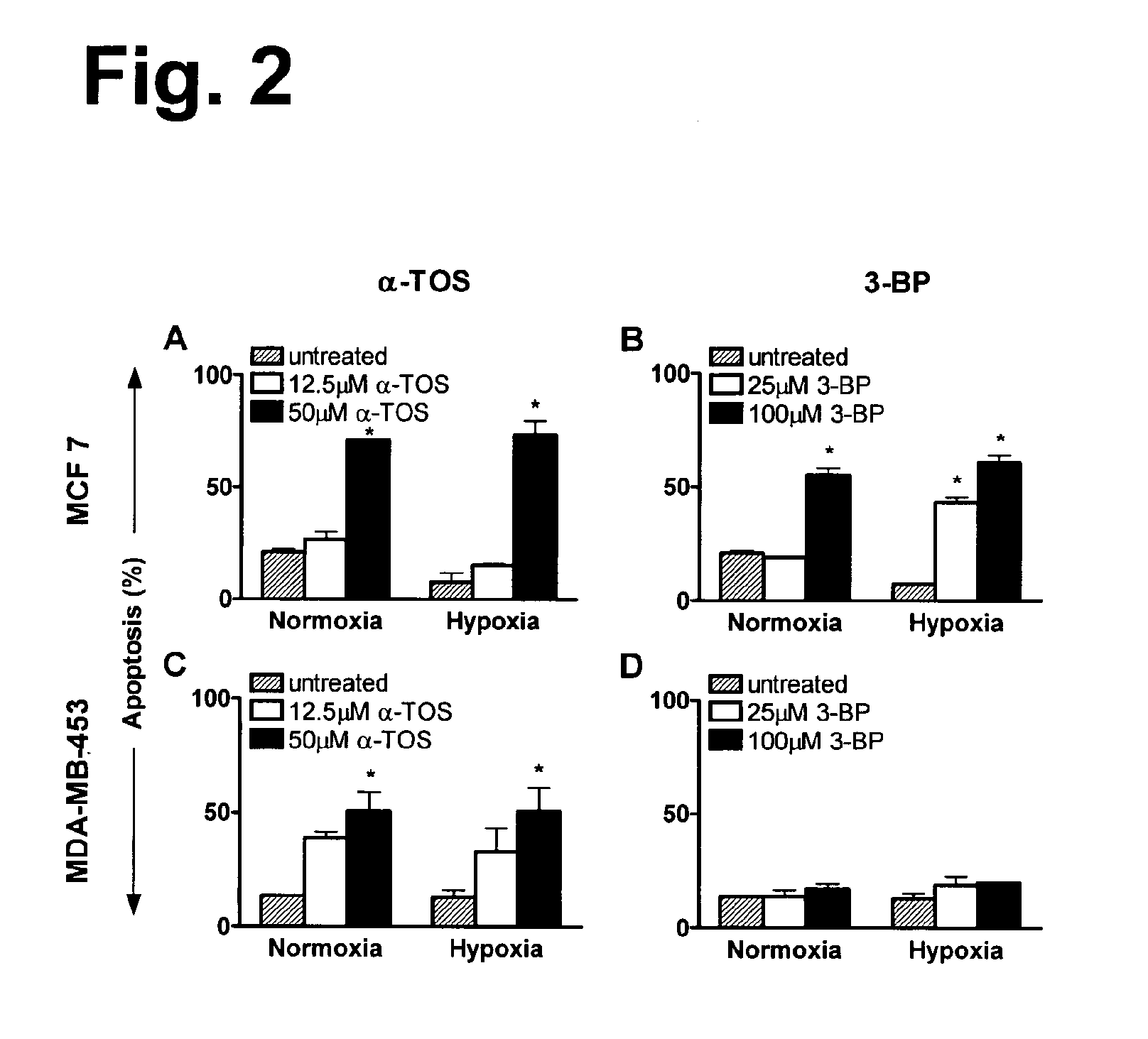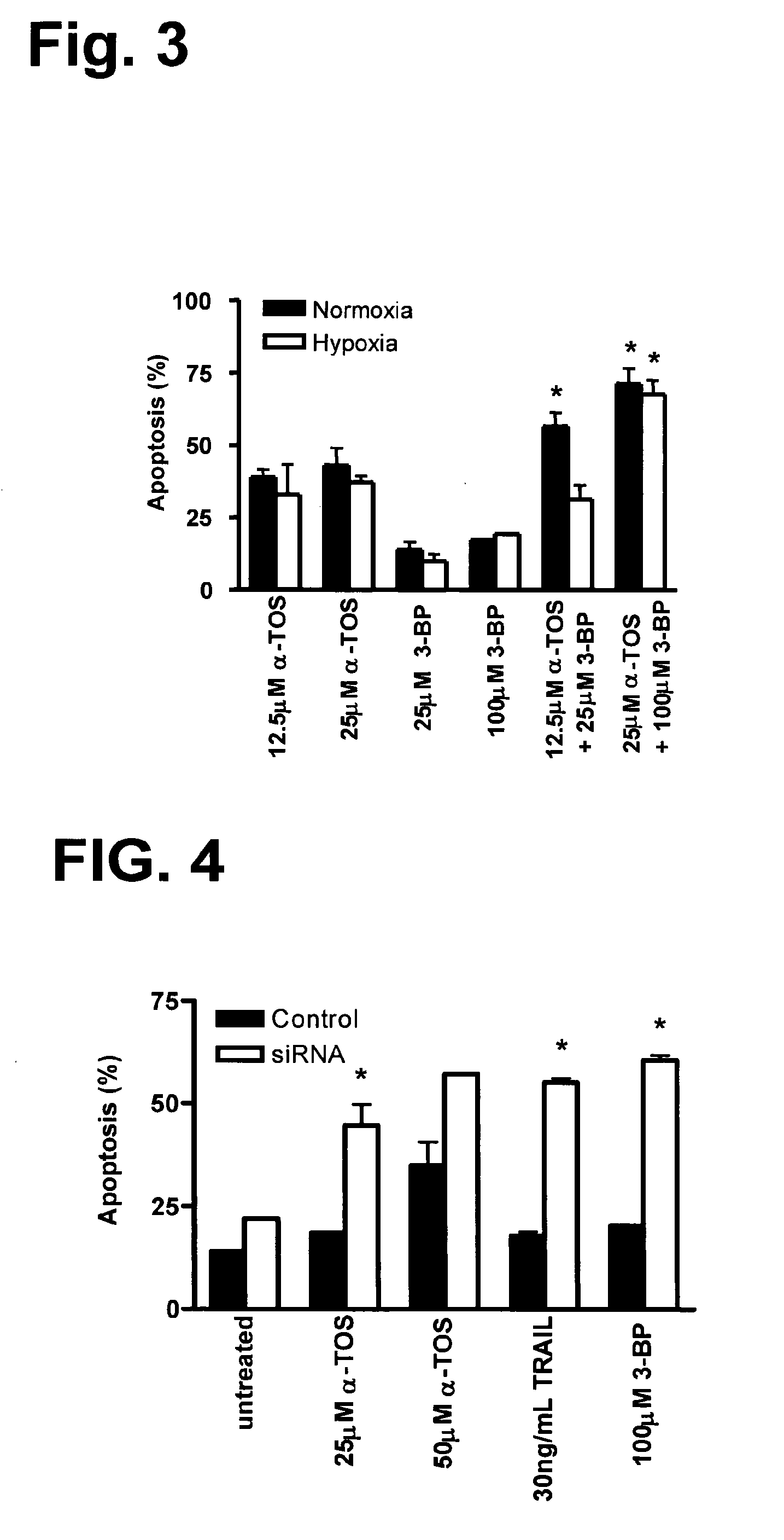Pro-oxidant Anti-cancer compounds
- Summary
- Abstract
- Description
- Claims
- Application Information
AI Technical Summary
Benefits of technology
Problems solved by technology
Method used
Image
Examples
example 1
3-BP, α-TOS or TRAIL Reduce Breast Cancer Cell ATP Levels
[0157]3-BP was previously reported as a highly active agent for depleting cellular ATP levels, occurring within several hours of treatment, depending on the particular dose of the drug used (Ko et al, 2004, Xu et al, 2005). In addition, the decrease in cellular ATP levels was shown to occur before the appearance of 3-BP drug-induced cancer cell death (Xu et al, 2005). The reduced ATP level correlated with the loss of pBad phosphorylation, which then allowed the pro-apoptotic Bax molecule to translocate to mitochondria, activating the apoptosis signaling pathway (Xu et al, 2005).
[0158]Therefore, the present inventors undertook a comparison of three drugs, α-TOS, 3-BP and TRAIL, for their effects on cellular ATP production in the human breast cancer MDA-MB-453 (erbB2-high) and MCF-7 (erbB2-low) cell lines. In addition, the drugs were tested on a murine breast cancer cell line, NeuTL, derived from the FVB / N rat c-neu transgenic m...
example 2
Highly erbB2-Positive Breast Cancer Cells are Resistant to Apoptosis Induced by 3-BP but not by α-TOS
[0161]Breast cancer cells exhibiting high levels of erbB2 expression have an associated greater resistance to apoptosis induced by some cancer treatments (Burstein, 2005). In agreement with these findings, the present inventors have recently observed that the highly erbB2-positive MDA-MB-453 cell line was much more resistant to apoptosis induced by the death receptor activator, TRAIL, when compared to its effect on the weakly erbB2-positive MCF-7 cell line. However, MDA-MB-453 cells proved responsive to α-TOS-induced apoptosis (Wang et al, 2005). In this study, the inventors compared the two mitochondria-affecting drugs, α-TOS and 3-BP, for their relative efficacy as apoptosis inducers in the high and low erbB2-expressing breast cancer cell lines and under different conditions of O2.
[0162]The results (FIG. 2) revealed that both the MDA-MB-453 and MCF-7 cell lines were sensitive to ap...
example 3
Combination of 3-BP and α-TOS Enhances Apoptosis in Highly erbB2-Positive Cells
[0163]In this study, the present inventors determined whether α-TOS and 3-BP overlapped or whether they could enhance killing of the 3-BP-resistant MDA-MB-453 breast cancer cells. This experiment would help to provide insight into whether these drugs work via similar mechanisms or independently of one another. It was known that 3-BP acts as an inhibitor of complex II by binding to the active site of the Succinate Dehydrogenase (Sanborn et al 1971). Hence it was likely that they both might overlap each other.
[0164]FIG. 3 shows results of the combined effects of α-TOS and 3-BP for inducing apoptosis in MDA-MB-453 cells. Indeed, MDA-MB-453 cells were surprisingly rendered more sensitive to killing by the combination of α-TOS and 3-BP compared to either drug used alone with the extent of cancer cell apoptosis significantly enhanced (p<0.05) when the drug combination was used. In addition, the enhanced effects...
PUM
| Property | Measurement | Unit |
|---|---|---|
| Volume | aaaaa | aaaaa |
| Volume | aaaaa | aaaaa |
| Volume | aaaaa | aaaaa |
Abstract
Description
Claims
Application Information
 Login to View More
Login to View More - R&D
- Intellectual Property
- Life Sciences
- Materials
- Tech Scout
- Unparalleled Data Quality
- Higher Quality Content
- 60% Fewer Hallucinations
Browse by: Latest US Patents, China's latest patents, Technical Efficacy Thesaurus, Application Domain, Technology Topic, Popular Technical Reports.
© 2025 PatSnap. All rights reserved.Legal|Privacy policy|Modern Slavery Act Transparency Statement|Sitemap|About US| Contact US: help@patsnap.com



